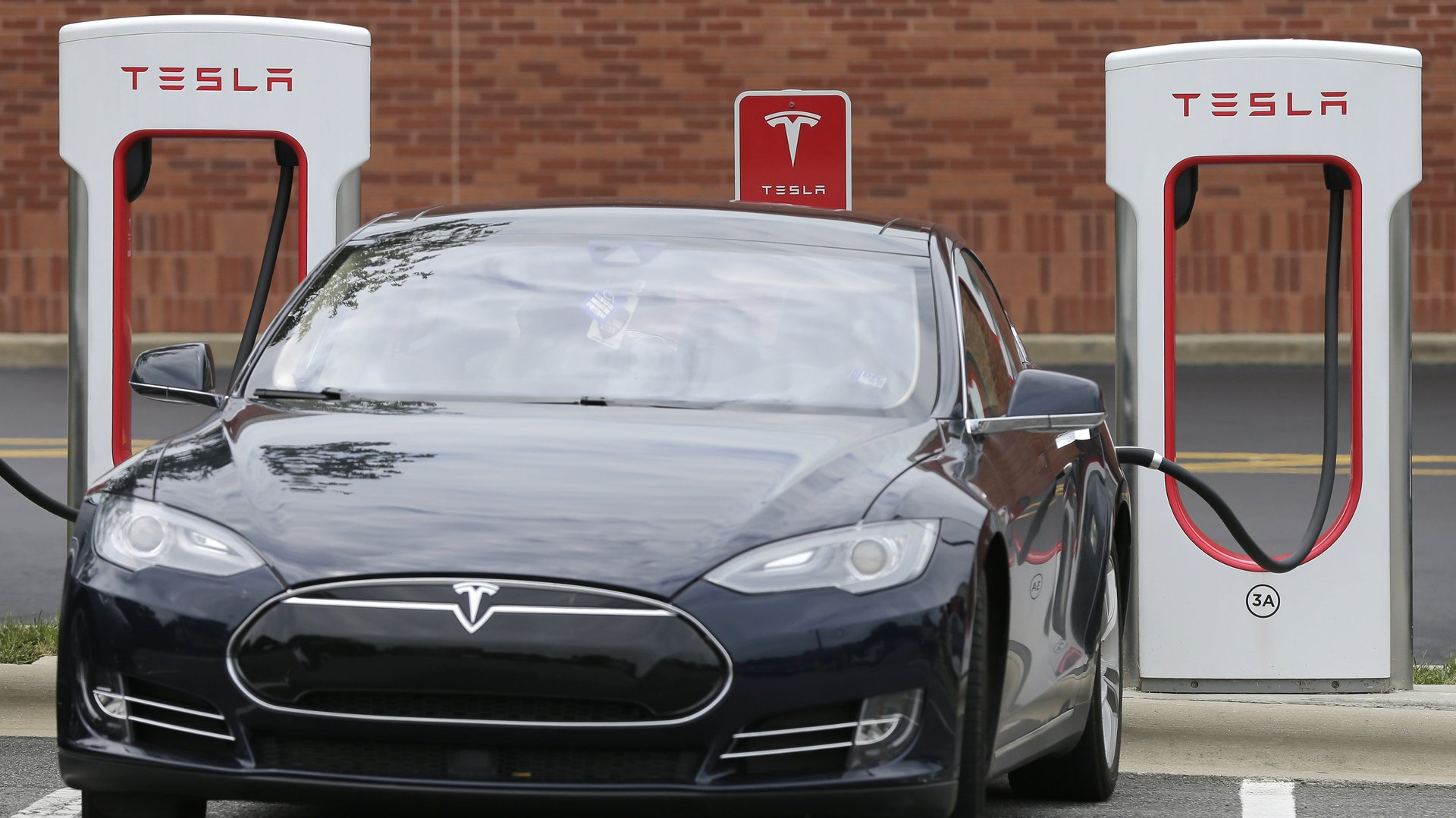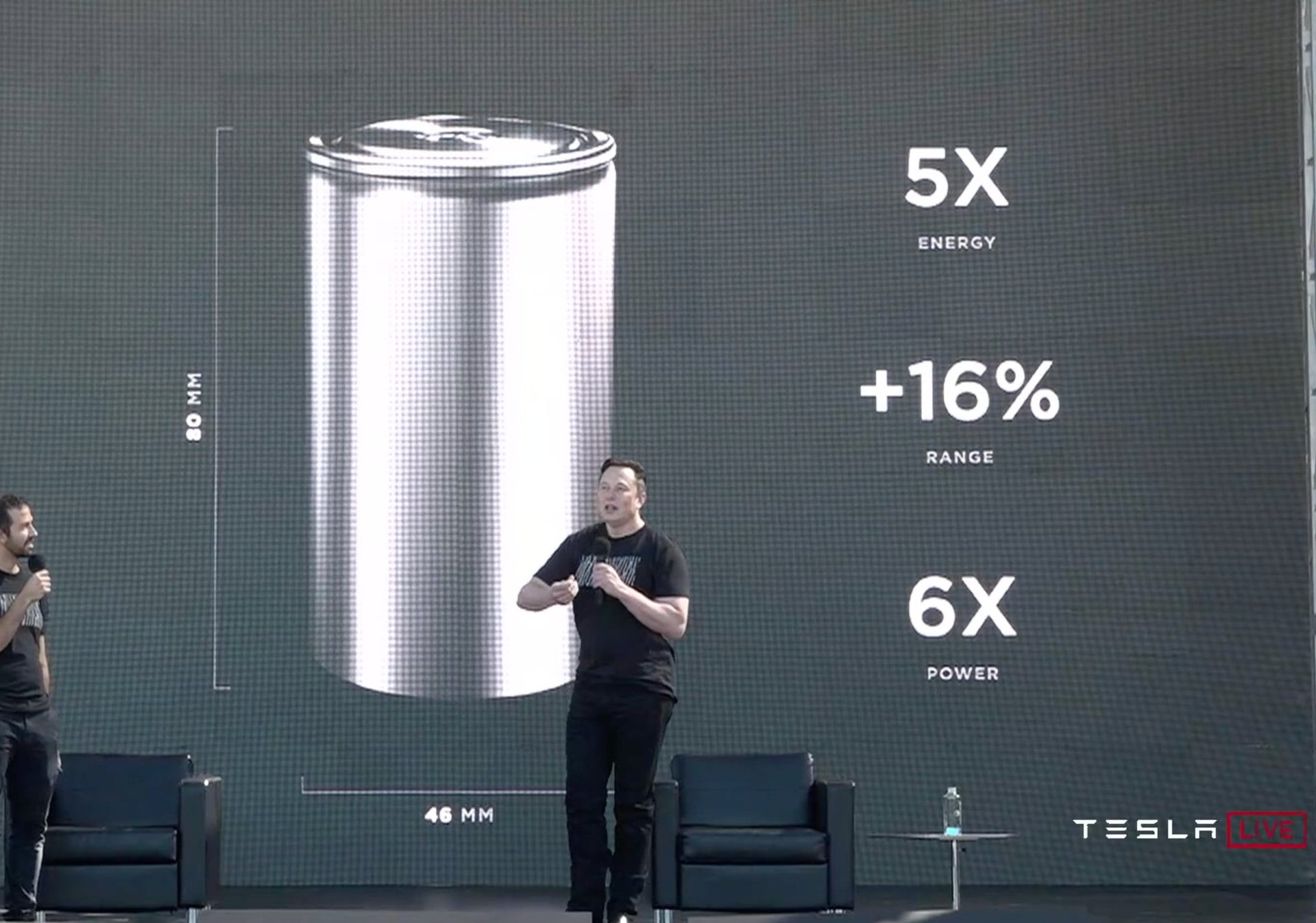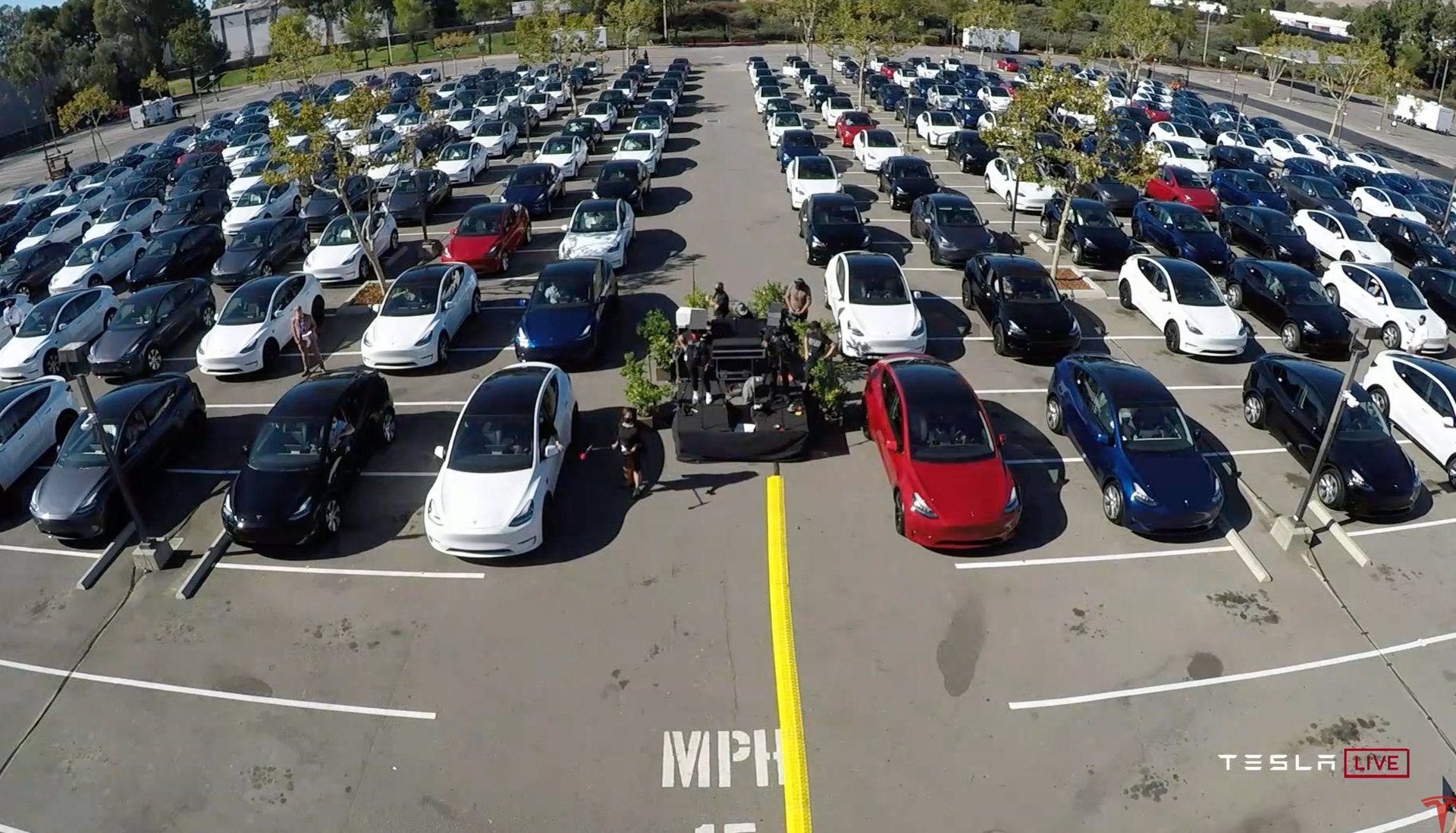Tesla is preparing to take over the world with its new battery—just not yet
At Tesla’s “Battery Day” yesterday, attention was on two magic numbers: $100 per kilowatt-hour and 1 million miles.


At Tesla’s “Battery Day” yesterday, attention was on two magic numbers: $100 per kilowatt-hour and 1 million miles.
Battery costs need to come down to around $100 per kWh for electric vehicles (EVs) to reach cost parity with internal combustion engines. And a battery that lasts 1 million miles will eliminate owners’ worries about durability and transform vehicles into valuable assets for the electricity bid.
CEO Elon Musk promised the first, and didn’t mention the second. Tesla’s battery is scheduled to come in at about $60 per kWh within three years, five years ahead of industry predictions. A million-mile battery capable of lasting an electric car’s entire lifetime (and longer), as well as recharge the grid was absent, but innovations Musk showcased might deliver it. (Telsa’s updated warranty guarantees its current batteries will retain at least 70% of capacity for 8 years or at least 100,000 miles. )
In prior years, that might have been enough to reassure investors. Even approaching Tesla’s target will supercharge the auto industry’s transition to electric vehicles. But most of Musk’s promises are years away from fruition. A lot has to go right for Tesla to justify its valuation as the world’s most valuable carmaker (its stock price has quadrupled this year). Signaling investors’ uneasiness, the stock price dropped 7% in after-hours trading, shaving $50 billion of Tesla’s market cap of $354 billion.
Redesign everything
Battery Day was an opportunity for Tesla to present its vision of becoming the world’s most sophisticated battery maker, and the largest automaker along with it.
Shareholders invited to the event sat in the company’s vehicles in the parking lot of Tesla’s Fremont factory, giving the pandemic presentation a drive-in format. Musk happily held forth in front of a towering screen with chief technology officer Drew Baglino. The car-bound audience honked in support throughout the presentation.


Since 2014, Tesla has been building its batteries at a Nevada “Gigafactory”in a joint venture with Panasonic. Now, it wants to redesign every aspect of the EV battery from dimensions to materials to the factories themselves. Historically, lithium-ion production is a bespoke affair requiring toxic liquid solvents, exotic metals, and an expensive manufacturing process. To change this, Tesla says it will adopt a dry manufacturing process (with no liquid solvents) and swap expensive cobalt with more affordable elements such as iron, nickel, and magnesium in its cathodes. Cell factory, design, and vehicle assembly are all being rethought from the ground up.
Together, Tesla says that adds up to a cheaper manufacturing process that looks more like the blindingly fast and inexpensive production of a soda bottling plant than the slow, laborious assembly of today. Within a few years, Tesla bets it can increase battery range by 54% while reducing manufacturing costs drop by more than half. If it succeeds in producing a cell that costs $61 per kWh, that will shave more than $2,000 per vehicle, UBS said in a report to investors, giving it a roughly 40% edge over rivals
But investors shrugged over Musk’s big promises, likely over dissatisfaction with the timeline. The rough outlines of Tesla’s battery advances were already suspected before yesterday’s presentation. Little of what was revealed was ready for production. Musk tempered his grand ambitions by acknowledging scaling up high-volumes battery production would be “insanely difficult” despite a pilot assembly line at Fremont already producing tens of thousands of cells.
“It’s not completely in the bag,” Musk said as he warned full-scale production was two years (or more) away. “But it’s close to working … There’s a clear path to success, but a ton of work between here and there.” Musk predicted Tesla’s battery output would hit 100 gigawatt hours by 2022, and 3 terawatt-hours per year by 2030, far higher than industry predictions. The entire battery industry produces less than 500 gigawatt hours today.
All this sounds suspiciously like a foreshadowing of the “production hell” that beset the Model 3, and almost bankrupted Tesla in 2018. Anyone casually following battery development has seen the trail of broken promises and shattered timelines over the last three decades.
But it’s not really about the batteries
Time after time yesterday, Musk described Tesla not as a carmaker, but as one of the world’s great manufacturers. Musk is not betting Tesla’s future on tomorrow’s batteries. He is betting it on its manufacturing prowess. Musk bragged about the custom aluminum alloy Tesla uses to make the Model Y’s rear chassis in a single cast. And how it’s using the batteries’ steel casing as structural support to eliminate vehicle weight. And the company’s vertical integration of the battery and vehicle manufacturing process at a time when legacy automakers’ globally distributed supply chains make it hard to coordinate rapid innovation.
The only durable competitive advantage in the industry, Musk argued, will be the ability to manufacture EVs cheaper and faster than rivals, not the technology itself.
“Eventually every car company will have long-range electric cars,” said Musk. “But not every company will be a great manufacturer. Tesla will be absolutely head and shoulders above anyone else in manufacturing. That is our goal.” Its latest strategy, Musk estimated, will enable it to produce 20 million vehicles a year, around 40 times current production and twice Toyota’s annual output.
Tesla has fumbled this before. In its original Fremont factory, Musk set out to create an “alien dreadnaught” of a manufacturing plant. Tesla would build robots capable of churning out vehicles faster than the eye could track with assembly lines stacked so densely it would be virtually impossible to walk between them. That strategy failed spectacularly. A humbled Musk later admitted “excessive automation at Tesla was a mistake,” he tweeted in 2018. “To be precise, my mistake.”
But big automakers should not rest easy. While most are just a few years from catching up to Tesla’s technology, figures UBS, they are far less likely to beat Tesla on performance, efficiency, range, and self-driving technology at comparable prices.
In an industry with exceedingly tight margins, Tesla could be a financial nightmare for rivals. By 2023, UBS predicted Tesla will enjoy 15% operating profits compared to the 6% or so average in the industry. That puts Tesla on track to be the most profitable automaker in the world within a few years. With automakers spending like never before to master electric and self-driving technology, cash is the key to survival. Tesla’s latest announcements may have disappointed investors. It should be a warning to the rest of the industry.